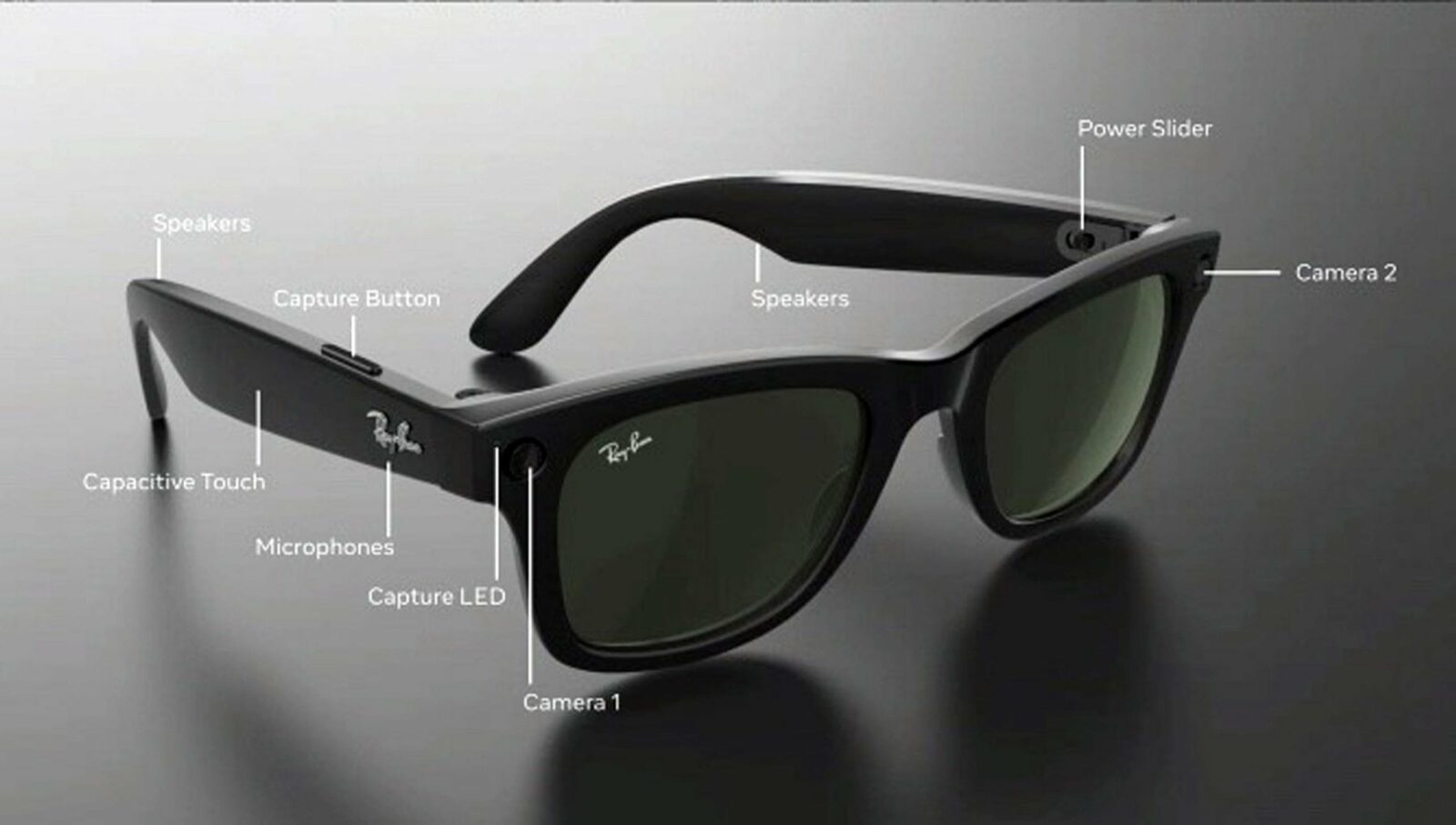Ray-Ban Stories are sunglasses running on Facebook tech that can capture a user’s perspective up to 30 seconds at a time.
The glasses can also take calls and stream music from a user’s phone.
When the glasses are turned off, they become regular Ray-Ban sunglasses that look very fashionable.
However, they are paving the way towards Facebook’s future in the fields of AR and VR.
Using Facebook View
Accessing the wide-angle shots from the Ray-Ban Stories can be done via the Facebook View app.
The standard model of the glasses begins at $299.
Facebook even has a very convenient offer – If asked, they will send you a free pair to try.
To use the glasses, you only have to sign in with your Facebook account, flip on a custom switch and say, “Hey Facebook take a photo,” or “Hey Facebook take a video.”
The advantage to using the glasses is that they are capturing what you see, like a POV video, but limited to a length of 30 seconds.
Some users reported that the glasses overheat after recording several videos in series during hot summer days.
Truth be told, footage taken with Facebook’s glasses looks pretty sharp and puts a perspective on sharing important moments of your life.
Here’s a demo video from Twitter user Ian Hamilton:
Facebook sent me the camera sunglasses. I’m just absolutely in love with this video I captured with them.
After using the glasses for a day I took them off and I was walking around outside and idly thought to myself “Hey Facebook take a video”. pic.twitter.com/glhzqRd1Um
— Ian Hamilton (@hmltn) September 21, 2021
The glasses have two indicator lights that shine, accompanied by a beep, when the glasses are recording a video.
You can modify the loudness of beeps but can’t disable them completely, just like you can’t disable the lights either.
The glasses are shipped with a protective case that also works like a charger, a lot like Apple’s AirPods.
You can also trigger a capture action (either photo or video) via a button on the right arm of the glasses.
The Facebook voice assistant can be disabled via the app’s settings, which is useful for the moments when you feel like it is more of a hassle than a helper, as it sometimes happens with voice assistants.
Current Mishaps
The tech is still in its early days. Sometimes the glasses overheat, and a “Glasses Need to Cool” message pops up on their designated app, announcing to the user that they can’t take captures, import, or charge before they cool down.
It’s a problem commonly found in nowadays’ technology, especially when used outdoors, in broad sunlight. The problem will certainly be solved with time; make no mistake.
VR Capabilities, The Metaverse, And More
Facebook is relying on the Ray-Ban brand to experiment with how Facebook Reality Labs tech can be used by regular users and the overall society.
The Ray-Ban Stories is a stepping stone and first attempt at shaping the future of Facebook’s AR glasses.
The Stories can be thought of as the Gear VR of smart glasses. It doesn’t necessarily carry Facebook’s branding or name, and it’s certainly missing a key element (a display), but that doesn’t mean that it can’t contribute to progress towards the VR realm.
The Ray-Ban stories aren’t particularly “smart” at the time.
In terms of software, they are performing well, and they might be the key to Facebook developing a personal assistant to rival the likes of Siri or Google’s Voice Assistant.
According to CEO Mark Zuckerberg, the Ray-Ban Stories are “an important step towards a future when phones are no longer a central part of our lives.”
Facebook is heading towards the Metaverse – a digital, VR realm, where users would supposedly enjoy daily activities and maybe even go to work at some point.
However, the technology isn’t quite there yet, so we must be patient and wait for more information from official channels (Facebook public statements) for now.












Leave a Reply